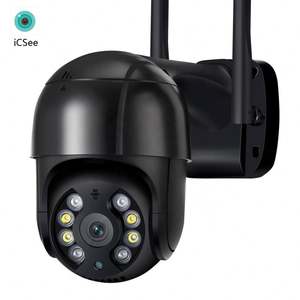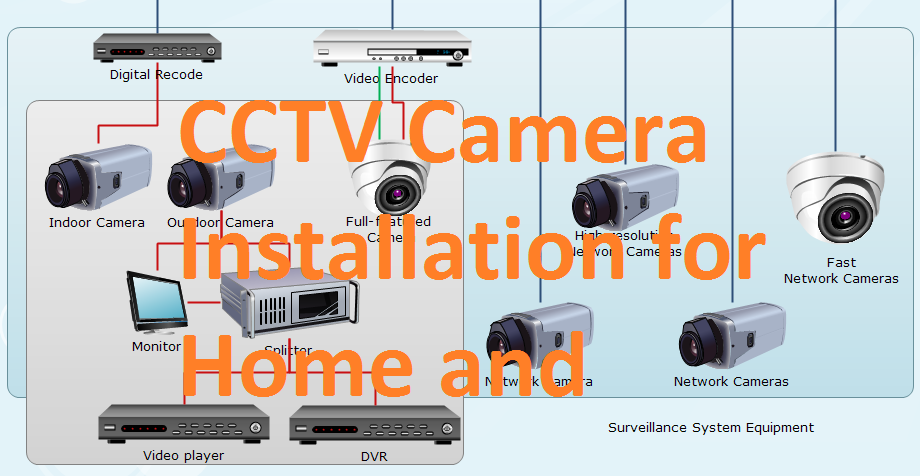Why Fiber Optic Security Camera Systems Are Ideal for High-Resolution Monitoring
Exactly How CCTV Cameras With Fiber Optic Outcome Enhance Long-Distance Surveillance
CCTV cams equipped with fiber optic output stand for a significant development in long-distance security innovation, using unrivaled advantages over typical systems. By leveraging the residential properties of light transmission through fiber optics, these cameras make certain high-def video clip quality remains intact throughout considerable ranges while effectively minimizing electro-magnetic disturbance. This advancement not just boosts image quality yet likewise improves setup processes and resource allowance. As we check out the ramifications of this innovation, one need to think about exactly how these innovations are improving the landscape of security and surveillance systems in various applications.

Comprehending Fiber Optic Modern Technology
Fiber optic modern technology is progressively used in long-distance monitoring applications as a result of its extraordinary ability for data transmission. This technology utilizes slim hairs of glass or plastic fibers to transfer data as light signals, significantly decreasing the attenuation generally connected with conventional copper cables. The intrinsic residential properties of fiber optics permit the transmission of huge quantities of information over considerable distances without loss of top quality, making it an excellent choice for applications requiring trusted interaction.
The concept of complete inner reflection facilitates the efficient transmission of light within the fiber, making sure high transmission capacity and rate. Unlike electric signals in metal wires, fiber optics are immune to electromagnetic interference, improving the stability of information transmission. This particular is specifically important in atmospheres with high levels of electrical noise, such as industrial setups or metropolitan locations.
Additionally, fiber optic cords are lighter and more flexible than their copper counterparts, which simplifies installation and minimizes architectural lots. With their resilience and resistance to environmental factors, optical fiber are fit for outdoor applications, thereby prolonging the reach of keeping an eye on systems. Because of this, fiber optic innovation is coming to be a keystone in modern-day security services, effectively dealing with the difficulties of long-distance tracking.
Benefits of Fiber Optic CCTV
Utilizing fiber optic modern technology in CCTV systems offers many advantages that enhance surveillance capacities. One of the main advantages is the capability to transmit high-def video clip over cross countries without substantial signal destruction. Unlike traditional copper cable televisions, optical fiber can preserve video quality over comprehensive runs, making them perfect for big residential or commercial properties or remote monitoring places.
In addition, fiber optic cables are much less vulnerable to electro-magnetic interference, which can distort signals in standard systems. This makes sure more clear images and uninterrupted service, critical for safety monitoring. In addition, optical fiber are inherently much more safe and secure, as intercepting signals calls for specific equipment, thus giving an extra layer of defense versus unapproved accessibility.
The lightweight and small nature of fiber optic cords also streamlines installment, enabling much easier directing with tight rooms and decreasing overall labor expenses. Their longevity makes them resistant to environmental variables such as moisture and temperature changes, prolonging the life-span of the surveillance system.
Finally, fiber optic systems can support a majority of cameras on a single network, optimizing resources and providing scalability for future development. These benefits make fiber optic CCTV systems an exceptional selection for contemporary monitoring demands.
Contrast With Standard Equipments
When contrasting CCTV systems, typical arrangements often fall brief in numerous vital areas, especially in regards to range find out this here and signal stability. Standard coax systems typically encounter significant signal deterioration over fars away, limiting effective surveillance varies to roughly 300 feet (cctv fibre optic cable). Beyond this limit, image clarity diminishes, causing potential dead spots and reduced security efficiency
In contrast, fiber optic systems maintain signal integrity over a lot higher ranges, typically exceeding a number of miles without loss of high quality. This is mainly as a result of their capacity to transfer data as light signals, which are less at risk to electro-magnetic interference than electrical signals made use of in traditional systems.
Additionally, traditional systems need much more substantial maintenance and troubleshooting because of their susceptability to environmental factors such as dampness and electro-magnetic noise. Fiber optic systems, conversely, offer boosted durability and reduced upkeep expenses, as they are less susceptible to damages.
Applications in Long-Distance Tracking
The advantages of modern-day CCTV systems in preserving signal integrity over cross countries open a wide variety of applications for long-distance monitoring. One considerable application is in city security, where districts deploy fiber optic CCTV systems to monitor public rooms, boosting safety and read this post here security and preventing criminal activity. These systems offer continual, premium video feeds that are crucial for efficient law enforcement and emergency action.
Another essential application remains in commercial settings, where remote tracking of manufacturing procedures and unsafe locations is necessary. Fiber optic CCTV can withstand harsh atmospheres and send data over cross countries without loss of high quality, enabling real-time oversight and reducing threats to workers.
Additionally, important infrastructure such as airport terminals, railways, and pipelines benefit from long-distance CCTV monitoring. Safety groups can oversee big areas from streamlined control spaces, guaranteeing quick feedback to any kind of events.
In addition, in agricultural setups, farmers make use of long-distance CCTV to keep track of crops and animals, helping to improve efficiency and protection. On the whole, the versatility and integrity of fiber optic CCTV systems make them crucial throughout numerous markets, enabling detailed surveillance options customized to specific demands.
Future Patterns in Monitoring Modern Technology
How will developments in modern technology reshape the landscape of surveillance? The future of security innovation is poised for significant transformation, driven by innovations such as man-made knowledge (AI), maker knowing, and side computing. These innovations enable real-time data analysis, permitting quick recognition of possible dangers and improved situational awareness.
AI-powered analytics will certainly boost the precision of facial recognition systems, lowering false positives and making it possible for more effective monitoring of individuals. Furthermore, the assimilation of Web of Things (IoT) gadgets will certainly promote a smooth fiber optic security camera network of interconnected surveillance systems, enhancing monitoring capacities throughout substantial locations.
An additional pattern is the change in the direction of cloud-based storage space remedies, which supply scalable data administration and availability. This will certainly allow companies to save substantial amounts of video data without the constraints of physical storage, while ensuring that info is quickly retrievable.

Final Thought
To conclude, CCTV cameras outfitted with fiber optic outcome stand for a considerable development in long-distance tracking capacities. The usage of fiber optic modern technology makes sure high-def video transmission over considerable distances without high quality deterioration, while also giving resistance to electro-magnetic interference. The lightweight and flexible nature of these systems promotes structured installment and source optimization. As surveillance modern technology proceeds to advance, the fostering of fiber optic solutions will likely play a critical role in improving safety and security throughout diverse applications.